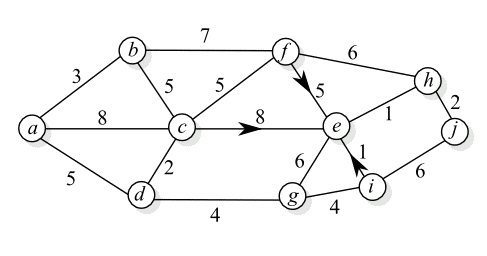

| Iter. | Label of a | Label of b | Label of c | Label of d | Label of e | Label of f | Label of g | Label of h | Label of i | Label of j | Perm. |
| 0 | 0,* | \(\infty\),* | \(\infty\),* | \(\infty\),* | \(\infty\),* | \(\infty\),* | \(\infty\),* | \(\infty\),* | \(\infty\),* | \(\infty\),* | a |
| 1 | |||||||||||
| 2 | |||||||||||
| 3 | |||||||||||
| 4 | |||||||||||
| 5 | |||||||||||
| 6 | |||||||||||
| 7 | |||||||||||
| 8 | |||||||||||
| 9 | |||||||||||
| 11 | |||||||||||
| 12 | |||||||||||
| 13 |
Prefix Match Interface
00 0
010 1
011 2
10 2
11 3
Suppose the decimal value of the mask for the ACK and SYN bits (indicating a SYNACK also known as an ACKofSYN) is 18. Suppose in addition, that, for a particular TCP packet, this 8-bit int has the value of 50. Are the ACK and SYN bits both 1 for this packet? Show all of your work. Hint: You can answer this question using the same techniques you have used to manipulate network masks.
Copyright 2013